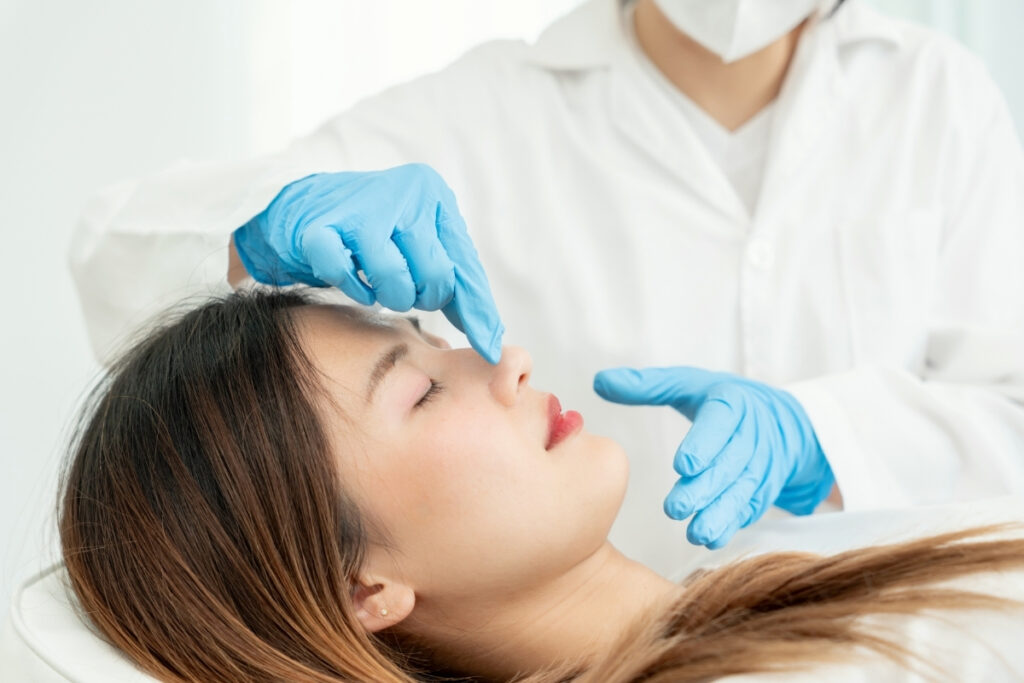Recovery after rhinoplasty means giving your nose time to rest and adjust. Think of it like soft clay right after the artist shapes it. Your nose is delicate at first, so gentle handling is key. Most people see big improvements in about one month, but final changes take up to a year.
Curious to see how rhinoplasty can help you breathe better or feel more confident?
Schedule a consultation with the best rhinoplasty surgeon in Istanbul, Dr. Cem Altindag, a trusted nose specialist known for tailored care.
He will guide you from start to finish, answering your questions each step of the way.
Now, let’s talk about healing.
Contents
- 1 What Is Rhinoplasty and Why Do We Do It?
- 2 How Long for a Nose Job to Heal?
- 3 Simple Tips for a Smooth Recovery
- 4 Questions People Often Ask
What Is Rhinoplasty and Why Do We Do It?
Rhinoplasty is a nose surgery. It can fix breathing problems or change your nose shape. Some people call it a nose job. If you want a smoother nose bridge, a smaller tip, or just better airflow, a surgeon reshapes bone and cartilage to help you reach that goal. The idea is to balance looks and function.
Even though surgery can be quick, recovery from rhinoplasty needs patience. There will be swelling, bruising, and stuffiness at first. Your body is healing. You simply have to let your nose settle, much like a puzzle locking into place.
How Long for a Nose Job to Heal?
Many people ask, “How long for a nose job to heal?” The short answer is one or two weeks off for rest, then light activity by Week 2. By Month 1, your nose looks much better, but small swelling can linger. At about one year, you see the final shape. Think of it as a series of steps. Each week, the nose becomes more stable and less swollen.
Days 1–7: The First Week

Day 1: Gentle Rest
On Day 1, you might feel sleepy from anesthesia. Your nose may have a splint. You likely have bandages to protect its new shape. Lie down with your head raised to help swelling go down. Take any pain medicine your doctor suggests. If the inside of your nose feels stuffy, ask how to clean it gently. Try not to bump or blow your nose.
Days 2–3: Swelling and Bruises
Swelling peaks around Day 2 or 3. Bruises may appear under your eyes. Cold packs on your cheeks (not your nose) can help. Keep your head elevated while you sleep. Soft foods are best if chewing feels awkward. Simple soups, mashed potatoes, or smoothies do not stress your nose.
Days 4–7: Gradual Relief
Around Day 4, swelling may slowly ease. Bruises can lighten. If you have a splint, it might come off by Day 7. You will see your nose, though it could look puffy. Avoid heavy lifting or bending over. These actions can raise blood pressure in your face and cause extra swelling or bleeding. Keep resting and healing.
Week 2: Going Back to Simple Tasks
By Week 2, many people feel okay returning to easy desk jobs. Makeup can hide leftover bruises. Your nose might still feel tender, so be careful. Avoid contact sports and heavy workouts. Keep using any saline sprays or ointments your doctor gave you.
If your doctor clears it, short walks can be nice. They help your blood flow and mood. But do not push yourself too hard. Listen to your body. If you feel tired, rest. Your nose is still in a critical healing stage.
Weeks 3–4: Seeing Changes
Subtle Improvements
After three or four weeks, bruising is usually gone. Swelling keeps going down, especially around the tip. If you compare photos from Day 1 and Day 30, you will likely see a big difference. People may not even notice you had surgery unless you tell them.
Gentle Movements
Light exercise might be allowed now. Think gentle yoga or slow cycling, if your doctor says so. Avoid any blows to the face. Sports like basketball or soccer can still be risky. If you wear glasses, ask about taping them to your forehead or using special supports.
Months 2–3: Feeling More Confident
By Months 2 to 3, you might forget you even had surgery, except for the last bits of swelling. Your nose tip may still feel slightly firm. That stiffness will soften over time. If you had trouble breathing before, notice if it has improved. At this point, you can usually do moderate exercise and most normal tasks. Just be mindful of your healing nose.
Eating balanced meals and drinking enough water helps your body rebuild tissues. Sleep well. Stress can slow healing. Try relaxation methods if you feel restless. Each day, you are one step closer to the final look.
Months 4–6: Almost There
By Month 4 or so, your nose likely looks more refined. Very mild swelling might remain, but most people cannot see it. This is often the time you fully enjoy your new shape. If you had functional corrections, breathing may be smooth and easy now.
Feel free to explore gentle contact sports if your doctor approves. Still, try not to get hit in the face. Protecting your nose prevents any setback. But do not let fear hold you back from living your life. With good care, your nose stays healthy.
Months 7–12: Final Shape Arrives

Some small changes can happen up to a year after rhinoplasty. The tip settles, the bridge finalizes its contour, and scar tissue fades. By Month 12, you should see your final result. Your nose should look natural, like it was always meant to be that way.
At your one-year checkup, your doctor might take final photos. This is your “before and after” moment. If any tweaks are needed, you can discuss them. Often, people are happy with the result by this point. They see a nose that feels balanced with their face.
Simple Tips for a Smooth Recovery
Keep Your Head Raised
Use extra pillows under your head, especially the first few weeks. This helps drain fluid away from your nose.
Gently Clean Your Nose
Ask your doctor how to clean inside your nostrils. Softly remove crusts with a moist cotton swab. Or use saline sprays. Never poke or blow your nose forcefully.
Eat and Drink for Healing
Fruits, veggies, and protein support faster healing. Water keeps you hydrated. Avoid too much salt, since it can increase swelling.
Wear Button-Up Shirts
Pulling tight clothes over your head can bump your nose. Try tops or pajamas that button or zip. This small trick helps avoid accidents.
Smile Softly
Big facial movements can tug on healing tissues. Laugh, yawn, and smile gently at first. Extreme expressions might strain the stitches inside.
Questions People Often Ask
Why Is My Nose Still Swollen?
Swelling can last many months. It is more noticeable at the tip. Your nose might look bigger at times. This is normal. Wait a bit more before judging your final shape.
When Can I Exercise Again?
Light activity might start by Week 2 or 3. Full workouts, like heavy lifting or running, often wait until at least Week 4 or later. Ask your doctor for a safe plan.
Will People Notice I Had Surgery?
They might notice bruising or splints the first week. By Month 1 or 2, you mostly look normal. If the changes are subtle, people might just think you look rested.
What If I Hit My Nose by Accident?
Stay calm. If there is bleeding or severe pain, call your doctor. Minor bumps may not be serious, but always be safe and check in if worried.


